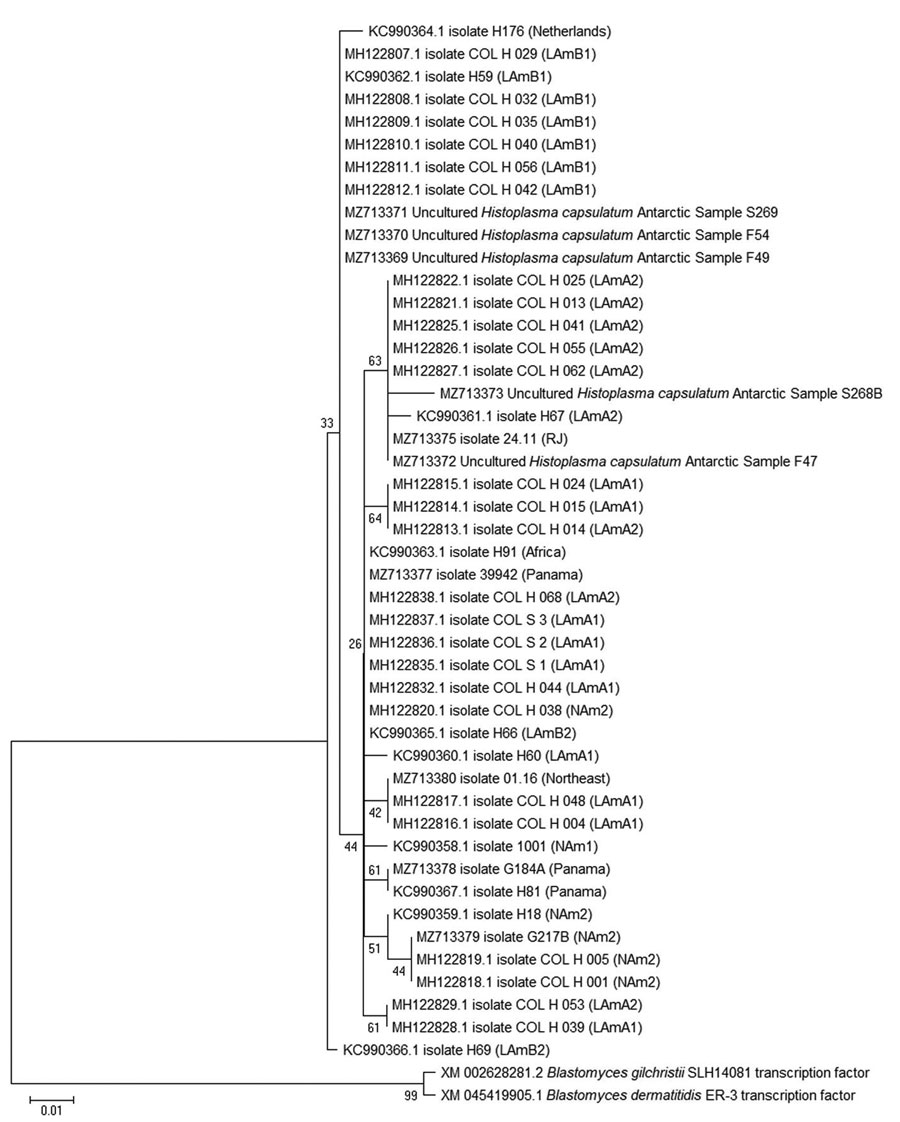Volume 28, Number 10—October 2022
Dispatch
Molecular Detection of Histoplasma capsulatum in Antarctica
Figure 2

Figure 2. Phylogenetic tree based on the 100-kDa–like protein partial gene sequences of Histoplasma capsulatum from Antarctica. The evolutionary history was inferred by using the maximum-likelihood method in in MEGA X software (https://www.megasoftware.net). This analysis involved 46 sequences: 5 from Antarctica samples and 41 representing geographic lineages of H. capsulatum in addition to the closest non-Histoplasma sequences (Blastomyces spp.) downloaded from GenBank (accession numbers shown). The bootstrap percentage of trees in which the associated taxa clustered together is shown next to the branches. Scale bar indicates the number of substitutions per site.
Page created: August 25, 2022
Page updated: September 21, 2022
Page reviewed: September 21, 2022
The conclusions, findings, and opinions expressed by authors contributing to this journal do not necessarily reflect the official position of the U.S. Department of Health and Human Services, the Public Health Service, the Centers for Disease Control and Prevention, or the authors' affiliated institutions. Use of trade names is for identification only and does not imply endorsement by any of the groups named above.